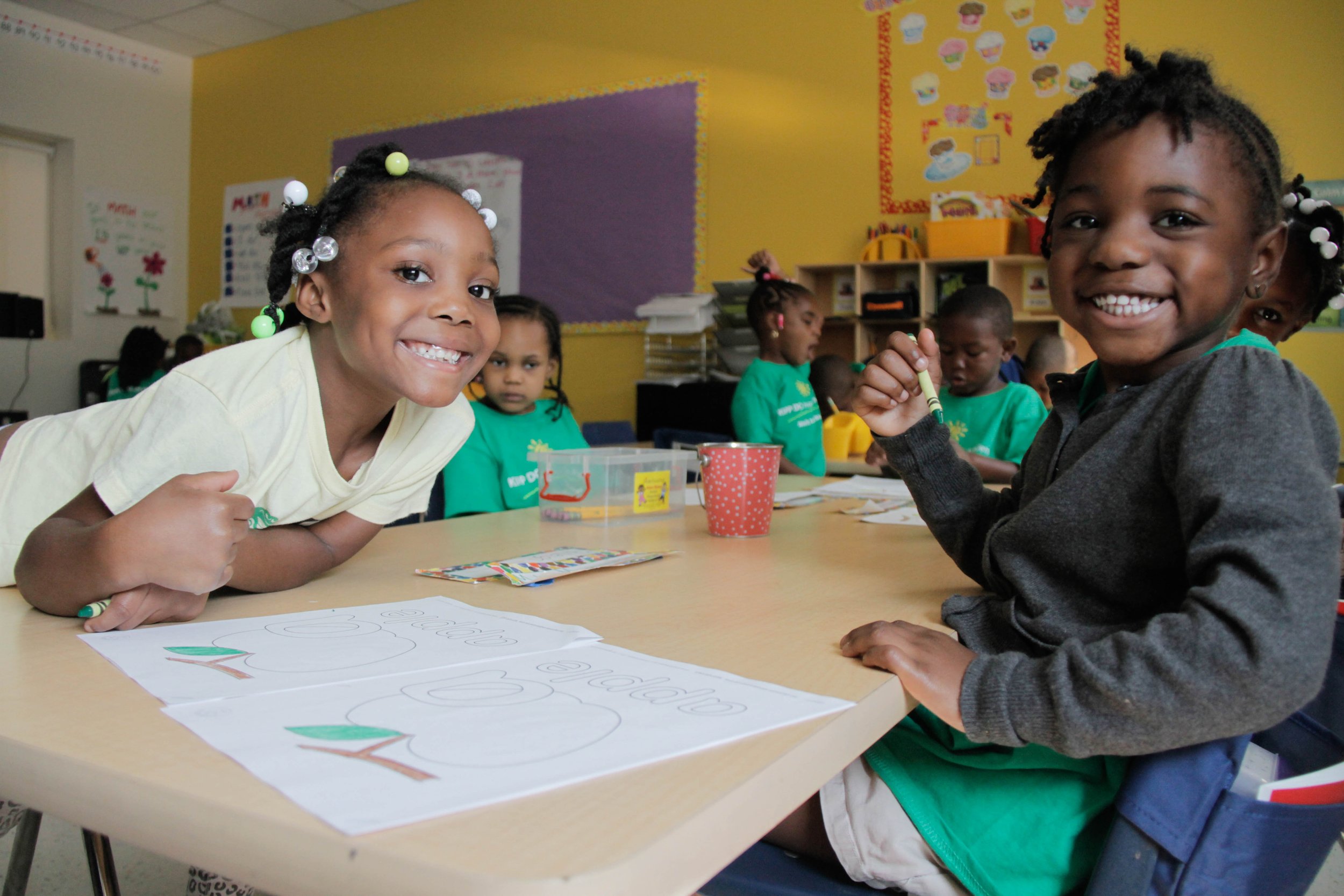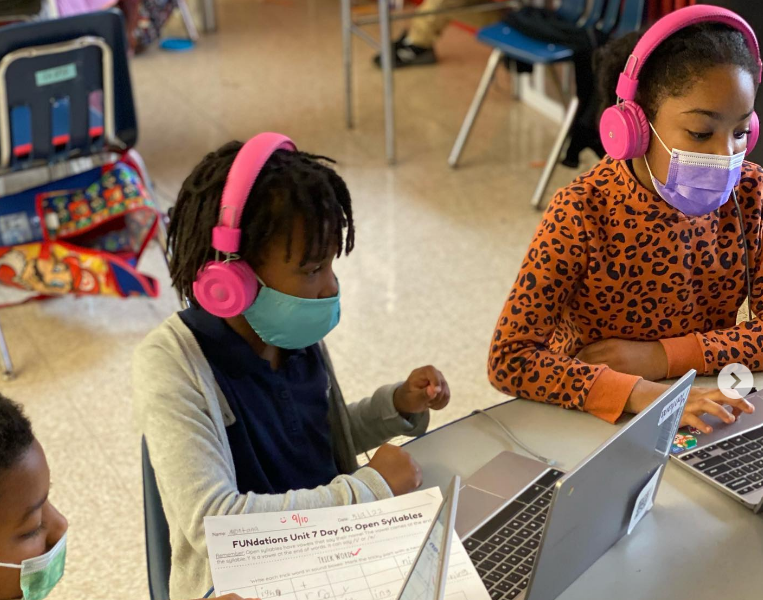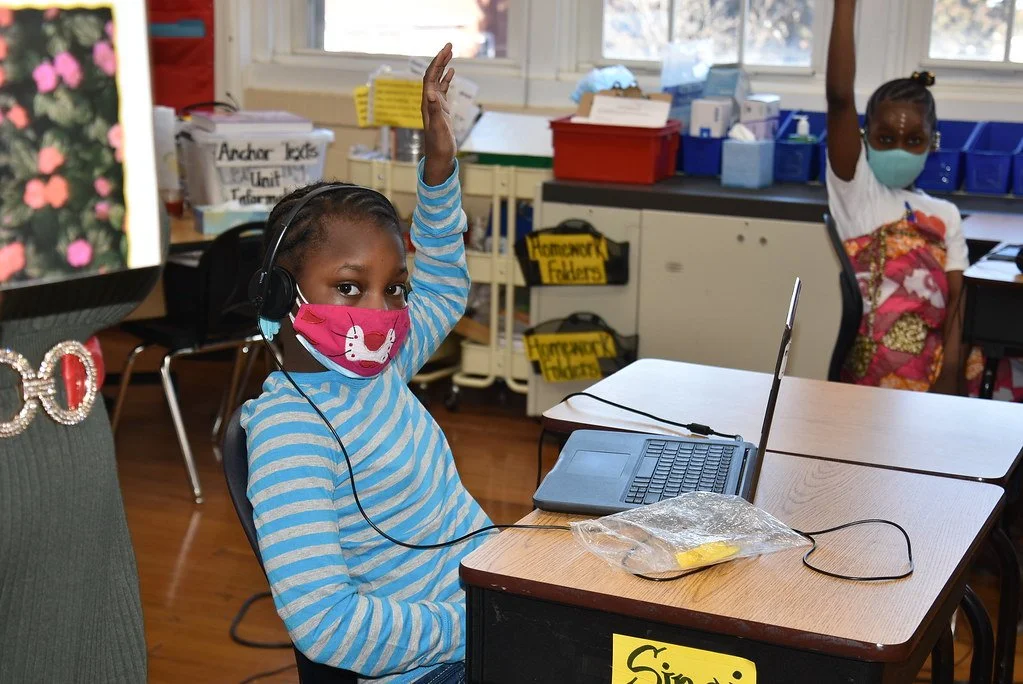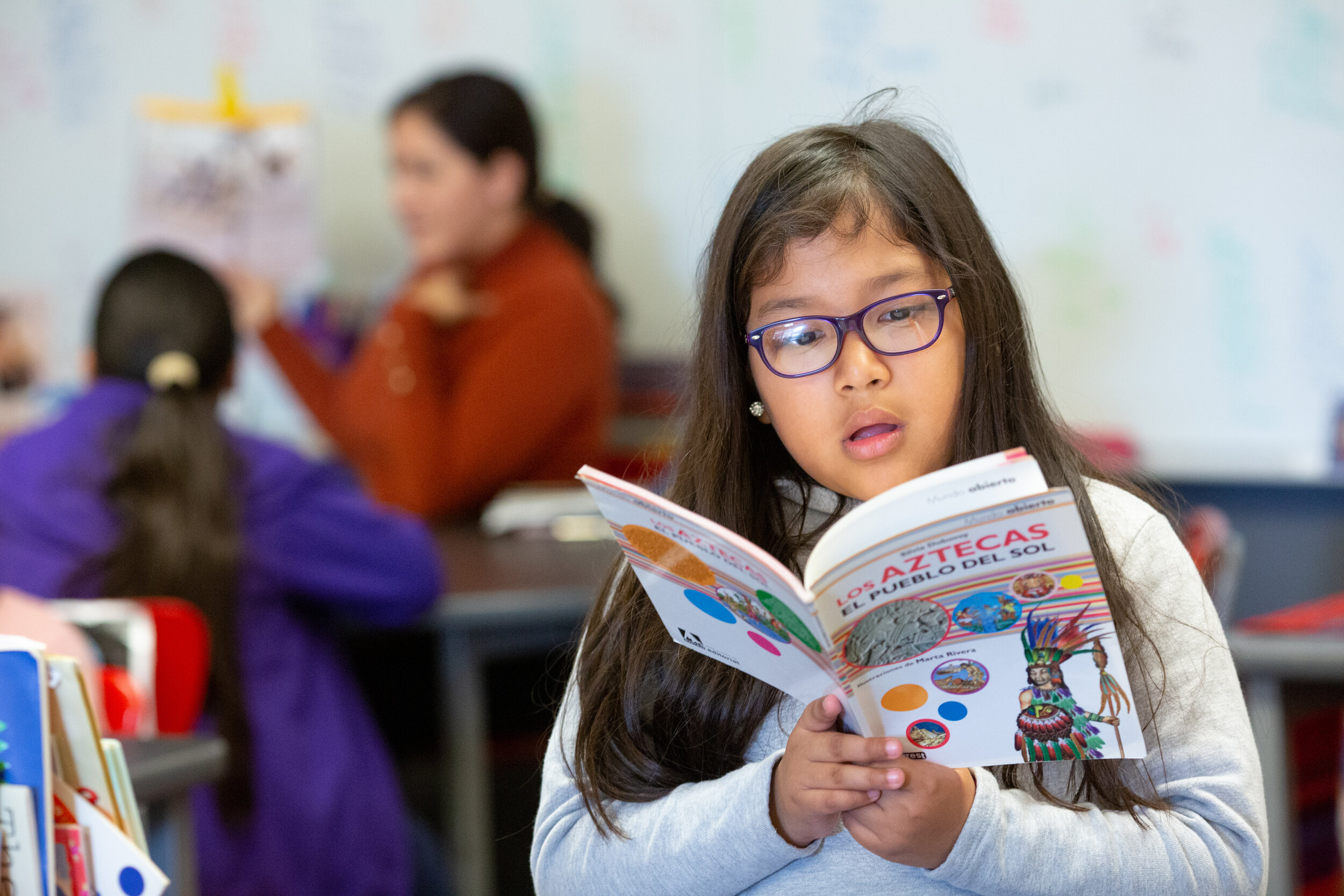
EK12 BLOG WITH ANALYSIS & ANNOUNCEMENTS
Our analysis of local and national educational data and policy trends.

EK12 Blog
Results from the 2025 DC Comprehensive Assessment of Progress in Education (DC CAPE) last month revealed that DC students achieved the largest single-year proficiency gains since the District transitioned from paper-based to computer-based testing in 2015.
Today, the DC Office of the State Superintendent of Education (OSSE) released results from the 2025 state assessment in math and English language arts (ELA). The results reveal something remarkable: DC students achieved the largest single-year proficiency gains since the District transitioned from paper-based to computer-based testing in 2015.
Happy Pi Day 2025! This blog post investigates the state of math achievement in the District. We highlight why DC is a national brightspot for math growth, and what practices we must scale to continue accelerating outcomes for all students.
The latest update of the Education Recovery Scorecard, which tracks academic progress in school districts across the country, has identified DC as a state and DC Public Schools (DCPS) as standouts making significant strides in student achievement and pandemic recovery.
Often referred to as the Nation's Report Card, NAEP assesses student proficiency in math and reading in grades 4 and 8 every other year. This year's findings paint a concerning picture of post-pandemic academic recovery in the United States and remarkably consistent progress in DC when compared to the nation.
When educators and community partners collaborate effectively, they create a foundation of trust and shared responsibility that directly impacts student outcomes. Decades of research highlight that strong ties between educators, families, and community members lead to improvements in student attendance, grades, and test scores.
Schools where students exceed expectations and are on track to close longstanding performance gaps, such as those in our 2023 Bold Performance Schools Report, turn data into action weekly that drives instruction. This blog post describes the practical steps Bold Performance schools take to become data-driven and exceed expectations, and how can EK12 help your school endeavor to become a Bold school
As we await the release of the 2024 Nation’s Report Card in Mathematics and Reading for grades 4 and 8, now scheduled for early 2025, the question of how DC is recovering from pandemic-related learning losses remains critical.
An international randomized control trial in Denmark demonstrated positive student outcomes for adding time to the typical school week, but the true return on investment depended on access to school leader and teacher training to make the best use of that time. In short, researchers found that details matter, and a well-structured strategy with implementation support is necessary to maximize the effectiveness of instructional time.
Performance on the 2024 DC CAPE assessment shows nominal changes in performance, with a 0.7 percentage point increase in math from 2023 and a 0.3 percentage point rise in reading. This apparent stagnation might lead to the perception that our system and teacher were unable to improve student outcomes. However, a more detailed analysis of the data and impact of the pandemic’s abrupt shift to virtual learning reveals a different story that underscores the importance of setting and pursuing bold educational goals for all students.
In the quest to improve educational outcomes, peer-reviewed science and our Bold Schools' experiences point to a powerful formula for success: setting bold educational goals for students, paired with just-in-time, evidence-based supports. The research is clear—when we combine high expectations and smart goals ideas for students with the right support, they can accomplish almost anything we ask of them.
Today, the DC Office of the State Superintendent of Education (OSSE) released results from the 2024 state assessment in math and English language arts (ELA). While the test has a new name, CAPE, the structure and scoring of the assessment was very similar to the previous PARCC test. The results are a bit disappointing, but covid’s impact was substantial and requires a proportional commitment and response. DC is not alone as achievement is largely stagnant locally and across the U.S.
Since our last update on chronic absenteeism in D.C., shared in our 2022 blog, there has been some encouraging progress. However, even with the progress we’re seeing, absenteeism continues to affect a significant portion of students, with current levels still higher than before the pandemic.
The 2023 District of Columbia state student assessment results in math and English Language Arts (ELA) are out, and they bring both cause for celebration and pause for reflection. While progress has been made since pandemic lows, we still have ground to cover before our students demonstrate achievement at levels similar to the pre-pandemic high of 2019. We focus this blog post on the PARCC test results, a rigorous assessment with items that require students to defend their answers and prove their knowledge on more than just simple multiple-choice questions.
This blog post focuses on a select sample of ThriveK12 wellbeing survey data of upper elementary students from 7 schools, middle schoolers from 6 schools, and educators from 7 public charter schools across the District. These schools have been continuous users of the ThriveK12 wellbeing surveys since fall 2020 and provided us with student fall-to-spring growth and attendance data from this year to identify additional correlations.
Student wellbeing index scores from a sample of DC public charter school students dropped this fall, to levels similarly seen in the spring of 2020-21, the second semester of the pandemic’s full virtual year. Panorama index scores for DCPS students also declined during the first semester. This data raises concerns about the holistic wellbeing of students across the DC school system and how quickly students may recover academically and social-emotionally.
Chronic absenteeism is on the rise since the onset of the COVID-19 pandemic. This blog post discusses our DC sample’s attendance data and six common themes we heard from teams at two bright spot schools.
DC’s most vulnerable students have been disparately harmed social-emotionally and academically during the pandemic. We provide an update based on winter 2022 data and ask Council to prioritize an equitable, holistic recovery.
While the District has experienced ongoing gentrification, we find one key contributing factor to the decline in the total number of students designated as at-risk is the minimum wage increase. This (rather lengthy) post examines the relationship between District population shifts, minimum wage hikes, the number of students who are designated as at-risk, and the likely undercount of students living in households that can benefit from the additional academic and social-emotional resources that the “at-risk weight” was designed to equitably fund.
This morning, a coalition of local education support and advocacy organizations formally launches a new campaign to ensure the 2021-22 school year is our Strongest Year Yet. This blog post is a summary of why EmpowerK12 believes in the coalition’s mission and how an equity-centric, continuous improvement-oriented approach can help us exceed ambitious goals we must set for a quick recovery.
Among the broad-based academic support recommendations in the research is maximizing the amount of instructional time. Just how important is “maximizing instruction time” when it comes to academic outcomes, and what are ways to obtain more time? We analyze both in this blog post.
This morning, EmpowerK12 released a report on COVID-19’s Impact on Student Achievement and Academic Growth in DC. We received more than 30,000 students' fall baseline assessment data from DC Public Schools and charter schools across the city to estimate the pandemic's impact on student achievement. This blog post contains additional analyses related to the report, including thorough statistical significance testing of key data points from the report and cuts of the data that fell outside the report’s focus on grades K-10 math and reading.
Obligatory warning: This blog post is written for the eduData wonk audience. We examine in-depth the relationship between demographic factors and STAR scores. The post is super heavy on statistics and data science.
While the COVID-19 pandemic has taken a toll on student academic growth since abruptly ending in-person school in March, negative impacts on student well-being has been assumed, but less well understood.
This fall, EmpowerK12, in partnership with seven DC charter school networks and local school-based mental health experts, set out to learn how DC students feel about and experience life and school. This blog post summarizes key findings from the fall survey and shares promising practices implemented at participating schools as a result of the data.
This blog post is the first in a series of 4 to be released over the next couple weeks focused on ways DC schools can reboot strong throughout this year and beyond by utilizing the strength of strategic collaboration and intentional data collection to power the continuous improvement of District students’ educational engagement no matter the hybrid learning context.
Distance learning, while an unanticipated response to mandated COVID-19 school closures since March, will likely be a fundamental component of schooling for the foreseeable future. We expect distance learning to be employed in various regimens as the virus ebbs and flows and social distancing requirements prevent the traditional school day schedule at different times over the next year. It can also be a tool for delivering additional instruction during breaks and weekends. The purpose of this blog post is to provide distance learning recommendations to schools from a data-driven perspective.
You may have heard conflicting information of late about whether student achievement gaps in the District of Columbia are widening or narrowing. As with most conversations about school data, there is nuance to addressing the question, and the answers rarely come with complete certainty. We take a comprehensive look at many data points to try and determine if DC schools are helping to narrow gaps for traditionally disadvantaged student groups.
In this blog post, we examine the following key questions related to the academic achievement and improvement of DC's at-risk students: How has the correlation between school level proficiency and percent of at-risk students tested changed over time? Is the pace of at-risk proficiency gains improving and when will DC at-risk students close the achievement gap with their national higher income peers? What school level operational and instructional policy decisions are helping to improve at-risk outcomes?
Over the last two decades, the District's demographic makeup has shifted in small and large ways, becoming more affluent with black/African American residents comprising a smaller share of the total population. Given the correlation between achievement and affluence, how much of the District's overall proficiency gains might be attributable to population changes and how much to overall student improvement?
This past December, OSSE released the new common DC School Report Card with STAR scores and ratings for every school and subgroup within the school. Then, in February, parents finalized their school preferences for the SY2019-20 school year. We analyzed the newly released MySchoolDC waitlist data for next year, comparing it to historical data as well as other school factors included on the new report card, to find out whether the new rating system impacted school choice on a broad level.

Check out our research.
EmpowerK12 partners with community leaders, education organizations, and schools to create research agendas that are responsive to current challenges and build collaborative networks to share data and find bright spots that solve common problems.































